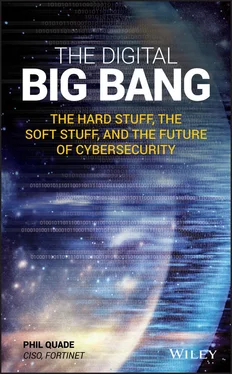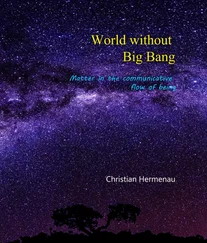Human knowledge of geography often informs an understanding or sense of how things move from one place to another and how authorities for various activities are allocated across vast stretches of geography. What schoolchild has not memorized the axiom that the shortest distance between two points is a straight line? However comforting the thought, cyberspace is only vaguely aware of the rule, finding it inefficient to blindly route communications around the globe based solely on the physical distances involved. To wit, an email being sent from New York to San Francisco in the middle of an American workday will compete for bandwidth with the massive flows attendant to financial trades and transfers, logistical coordination among shippers and suppliers, personal communications, and even the latest YouTube craze-du-jour of cats playing pianos, and might be sent from New York to San Francisco through other countries.
Software running on the millions of computers controlling the storage devices and pathways of cyberspace constantly senses the status of various routes, sometimes sending communications around the planet on pathways that are underutilized to arrive at a destination only miles away in the shortest time possible. Not understanding the informal but influential rules that inform cyberspace routing means users may be forever surprised at the paths their communications take and where they may actually reside while being stored until the owner accesses them. In most cases, this counterintuitive phenomenon represents a user-preferred feature, in that the details of routing and storage are handled automatically without requiring the user to master and direct complex aspects of technology, communication routes, and traffic flows. But the downside is obvious for users who assume that their data is safe from prying eyes or other risks because it is stored or routed through technologies and routes that are wholly within the users' field of view.
Experience in the geography layer also informs a sense of who is responsible for what. Cyberspace cannot ignore the reality that laws, policies, and treaties that govern human affairs are almost always tied to geography. This reality becomes particularly challenging when trying to sort out which laws pertain to property that is shared across countries or, more significantly, what jurisdiction pertains to an activity that crosses space and time in milliseconds, only to take a different route seconds later.
A case in point helps to illustrate this challenge. If a person in country A (for instance, the imaginary nation of Inglisia) hacks into a computer in country B (the imaginary country of Quadeland) and uses that hacked machine to attack computers in a third country (the United States), then which laws and property rights pertain? Can the victim who owns the US-based machine reach out and hack back at the machine in Quadeland? If so, do the laws of the United States or Quadeland apply? What if the victim is a resident of a fourth country? In this way, rules based on geography quickly break down and require a model that allows users to work across borders, a model that must satisfy the highest common denominator of the expectations of privacy, due diligence, and other user expectations embodied in the laws of the various jurisdictions. The issue of jurisdiction in cyberspace is only now being reconciled to the physical (based on geography) and practical (how it really works) realities of cyberspace.
The top layer reflects the fact that people are an integral component of cyberspace. Indeed, people (rather than technology) explain the dynamic, ever-changing nature of cyberspace as users employ its various capabilities in ways that depart from, and even confound, the expectations of component, software, and system designers.
There are several important implications attendant to this layer of the model under discussion. First, while constitutions, laws, and policies typically allocate rights to people based on their citizenship or physical location, cyberspace allocates access and privileges based on the identities formed and authenticated in cyberspace. The old joke of one dog saying to another that “on the Internet, no one knows you're a dog” remains truer than not across broad swaths of the domain. Although there is often a reconciliation of a person's status between the physical and virtual worlds, cyberspace rules prevail in the determination of privilege in accessing resources in and through cyberspace. This reality makes the application of laws defined in the physical world to its cyberdoppelgänger challenging, especially when identities in cyberspace are spoofed or are indeterminate as a result of the users' employment of applications designed to cloak their identity so that their actions can be taken without attribution (sometimes referred to as “anonymity” features). This is not to say that the distinctions defined in the physical world do not matter, or that they do not have jurisdiction in cyberspace, but merely that it is often difficult, and sometimes impossible, to identify users or assign attribution within the current capabilities of cyberspace. This difficulty has significant implications for any desire to attribute actions in cyberspace so that identification of who took a certain action can be achieved and serve as a basis for meting out the appropriate rewards or consequences attendant to the action.
The circuit layer of the model depicts the literal pathways that communications take to make their way from one place to another within cyberspace. Taken together with the geography and people layers of the unfolding model, this layer represents the sum total of what would have once been referred to as the telecommunications domain.
Long before the advent of the computers, sophisticated software, and ubiquitous wireless devices that power today's Internet, the telecommunications domain offered a simple and reliable means for a given communication to be sent and received across far-flung stretches of the earth. In that day and age, the flow of communications was still directly and manually controlled by human beings. A person would literally choose whether, when, and how a message would be sent by dialing a phone, faxing a message, or keying a microphone to initiate a communication. The communication would then flow from one location to its destination along a generally straight line, often a dedicated path (or link), and would be immediately received by the intended recipient on the other end. In effect, the communication would be manually pushed from one location to another and would be at risk of disclosure to a third party only during the time it was in transit. Before and after the transmission, the communication would reside in a sanctuary of sorts: In a person's mind, in a desk drawer, or if need be, in a safe.
As the Internet began to spread its web using these same methods of communication and as the means of transmission, storage, and presentation to communicants around the world increased exponentially in variety, scope, and scale, the telecommunications domain was transformed in several important ways.
First, decisions about when and how communications would flow across the spaces between two communicants were delegated to computers embedded with increasing regularity in communication and storage devices.
Second, communications were stored for later retrieval by intended recipients or as “on the web” resources for the sender. Some readers may recall that the initial novelty of email was less in the fact that it connected two people living great distances from each other than in the fact that it allowed people to communicate without both having to be “on line” at the same time. The communication would simply wait for the intended recipient to request access to the stored communication—forever, if necessary.
Читать дальше











